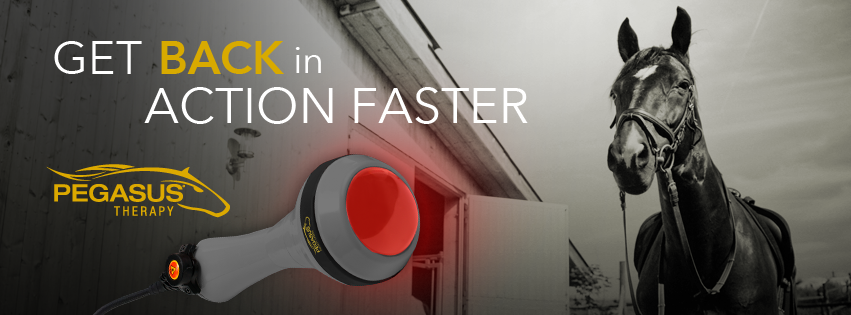Whatever You Required to Understand About Equine Therapy for Mental Health
Whatever You Required to Understand About Equine Therapy for Mental Health
Blog Article
Evaluating the Performance of Laser Treatment in Horse Therapy for Injury Recovery
The evaluation of laser treatment's effectiveness in equine injury rehab pivots on several variables, including healing time, discomfort reduction, and tissue regrowth. Veterinarians often observe superior results with laser therapy compared to conventional approaches, placing it as a crucial element in equine care.
Recognizing Laser Treatment
Laser treatment has come to be an essential device in veterinary medicine, especially in the therapy of equine problems. Known for its non-invasive nature and efficiency, laser therapy entails the application of particular wavelengths of light to promote tissue repair and lower inflammation. This healing technique is increasingly favored for its capacity to accelerate the recovery process in equines experiencing a selection of bone and joint injuries and persistent problems.
The primary system behind laser therapy is its capability to improve mobile functions. When laser light permeates the skin, it is taken in by mitochondria, the giant of cells, which results in increased manufacturing of adenosine triphosphate (ATP) This biochemical power boost promotes cellular repair work and regeneration. Additionally, laser treatment advertises vasodilation, enhancing blood flow and oxygen shipment to damaged cells, therefore speeding up recovery.
In equine medication, laser treatment is especially useful for conditions such as tendonitis, osteo arthritis, and wound healing. The strategy is lauded for its pain-relieving residential properties, permitting steeds to reclaim mobility and function a lot more quickly. Veterinarians additionally value its marginal negative effects contrasted to other treatment methods, making it a reputable and safe alternative for equine treatment.

How Laser Treatment Functions

Upon absorption, these photons trigger a series of biochemical modifications, improving mitochondrial function and causing enhanced adenosine triphosphate (ATP) production. This surge in ATP accelerates mobile metabolic process, advertising tissue repair service and regrowth. Additionally, laser therapy modulates inflammatory feedbacks by influencing cytokine levels and reducing oxidative stress, consequently easing discomfort and swelling.
Another considerable aspect of laser treatment is its role in boosting microcirculation. The therapy advertises vasodilation, enhancing blood flow and oxygen shipment to damaged tissues (Equine Therapy). This promotes the elimination of cellular particles and supports the expansion of fibroblasts and collagen synthesis, critical for injury recovery
Professional Evidence
The efficiency of laser treatment in equine therapy has been substantiated with various scientific studies, showcasing its therapeutic possible throughout a variety of conditions. Several regulated trials and empirical researches have recorded significant improvements in tissue repair work, discomfort decrease, and overall rehabilitation timelines. A research study performed by Turner et al. (2012) demonstrated that horses treated with low-level laser treatment (LLLT) for ligament injuries exhibited increased healing contrasted to those getting standard therapies. The research a knockout post highlighted a significant decrease in inflammation and boosted collagen development.
Likewise, research study by Johnson and coworkers (2015) concentrated on equine muscular tissue injuries, exposing that laser treatment significantly accelerated go muscle fiber regrowth and decreased muscle mass stiffness. Professional analyses have revealed that laser treatment can ease chronic conditions such as osteo arthritis.
Veterinarian Insights

Veterinarians likewise value the convenience of laser treatment. She aims out that laser treatment can be customized to the particular demands of each steed, ensuring optimal results.
Additionally, vets value the ability to incorporate laser therapy with various other treatment modalities. This multimodal technique can enhance total therapy effectiveness, giving a comprehensive solution for equine rehab. Such endorsements from experienced professionals emphasize the expanding acceptance and application of laser therapy in equine medication.
Practical Factors To Consider
A vital aspect of carrying out laser treatment in equine therapy involves understanding the functional factors to consider that guarantee its effectiveness and safety. Primarily, it is essential to choose the appropriate laser gadget, as different types differ in wavelength, power, and penetration depth. Equine Therapy. Vets must be well-versed in these parameters to tailor treatment protocols properly to each injury type
In addition, the regularity and period of laser therapy sessions need careful planning to make best use of therapeutic benefits while reducing any type of potential damaging results. Regular monitoring of the horse's response to treatment can guide required changes in the look at this now therapy routine. Developing a secure and regulated atmosphere throughout therapies is likewise important to stop accidental exposure to laser discharges, which could damage both the horse and the handler.
Training and qualification of personnel administering laser treatment are extremely important to guarantee appropriate technique and to promote security criteria. Additionally, preserving accurate documents of each session, consisting of laser setups and observed outcomes, is vital for evaluating the total performance of the treatment and for making data-driven decisions.
Conclusion
Laser therapy has become an effective modality in equine injury rehabilitation, providing significant advantages in healing time, pain alleviation, and cells healing. Medical researches emphasize significant enhancements in problems such as tendonitis and osteo arthritis, connected to enhanced cellular feature and enhanced ATP manufacturing. Vet observations prove these searchings for, highlighting remarkable end results compared to standard treatments. For optimum outcomes, constant monitoring and individualized therapy methods remain crucial in leveraging the complete possibility of laser treatment in equine care.
Report this page